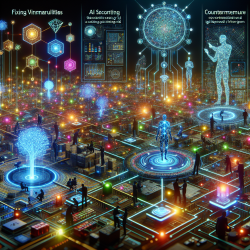The integration of advanced technologies in smart grid (SG) systems has revolutionized electricity generation and distribution. However, this increased reliance on technology also introduces new vulnerabilities. A recent study titled "Study of smart grid cyber-security, examining architectures, communication networks, cyber-attacks, countermeasure techniques, and challenges" provides valuable insights into these challenges and offers strategies to enhance cybersecurity in SGs.
Understanding Smart Grid Vulnerabilities
Smart grids utilize advanced network communication and monitoring technologies to manage electricity generation and transport. This connectivity makes SGs susceptible to large-scale cyber-attacks such as Denial of Service (DoS), replay attacks (RA), and false data injection attacks (FDIA). These attacks can lead to severe consequences like economic losses and disruptions to vital infrastructure.
Implementing Research Outcomes
Practitioners can improve their cybersecurity skills by implementing the outcomes of the research. The study presents a comprehensive architectural diagram of SG components and communication links, enhancing the understanding of potential cyber threats. This holistic view enables systematic risk assessments for SGs.
- Taxonomy of Cyber-attacks: The study categorizes various cyber-attack types based on targets and methods. This detailed insight helps identify vulnerabilities and implement robust security measures.
- NIST Cybersecurity Framework: Unlike other reviews that focus narrowly on protection and detection, this study covers all five functions of the NIST framework—Identify, Protect, Detect, Respond, and Recover—providing a balanced perspective for organizations to implement robust security.
- Blockchain and AI Solutions: The study highlights blockchain-based solutions for secure data management and artificial intelligence techniques for detecting anomalies in real-time.
Encouraging Further Research
The study identifies critical research gaps, especially regarding response and recovery mechanisms. Practitioners are encouraged to engage in further research to address these gaps. Key areas include:
- Response Mechanisms: Developing advanced response strategies to mitigate the impact of cyber-attacks promptly.
- Recovery Techniques: Exploring innovative recovery techniques to restore normal operations swiftly after an attack.
- Interdisciplinary Approaches: Collaborating across disciplines to integrate cybersecurity measures with other critical infrastructure sectors like water and transportation networks.
The study underscores the importance of continuous learning and adaptation in the face of evolving cyber threats. By staying informed about the latest research findings and technological advancements, practitioners can enhance their skills and contribute to a more secure smart grid ecosystem.
To read the original research paper, please follow this link: Study of smart grid cyber-security, examining architectures, communication networks, cyber-attacks, countermeasure techniques, and challenges.










